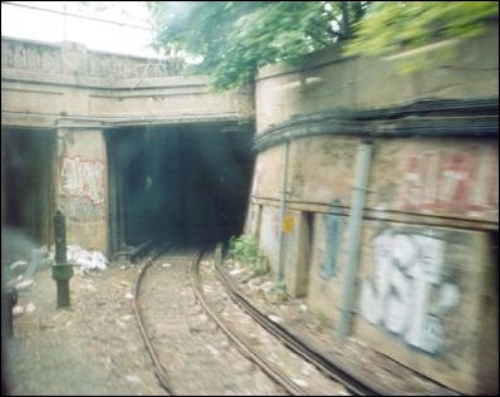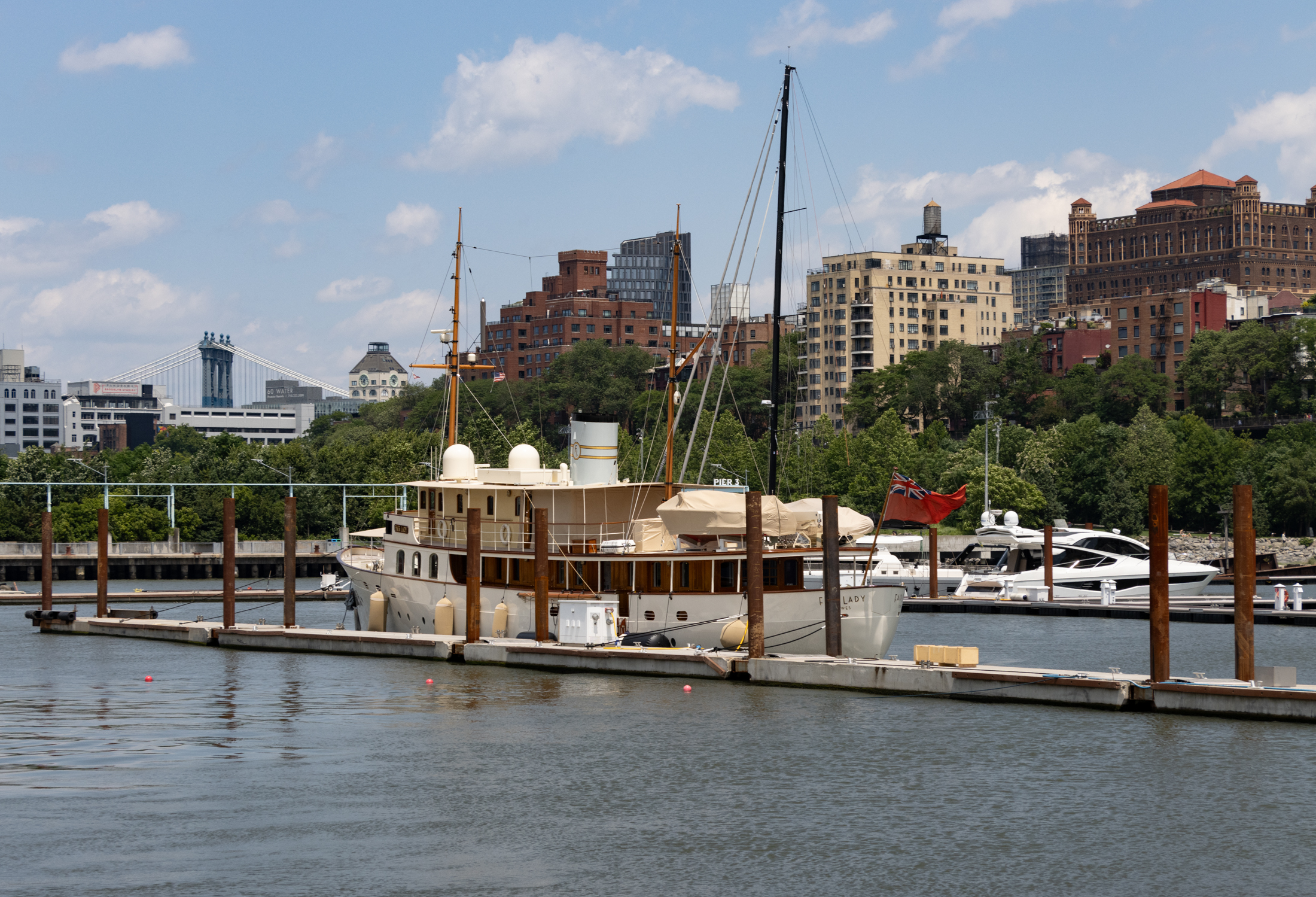Walkabout: Death Rides the Rails, Part 3
Read Part 1 and Part 2 of this story. In the aftermath of great disasters, there is always the need for assigning blame, and seeking justice. In the case of the Malbone Street Wreck, which killed at least 93 people, and seriously injured over 200 more, that need was great. The people demanded answers, and…

Lead car and motorman’s station is hardly damaged, but the second car is almost gone. Photo via Popularmechanics.org
Read Part 1 and Part 2 of this story.
In the aftermath of great disasters, there is always the need for assigning blame, and seeking justice. In the case of the Malbone Street Wreck, which killed at least 93 people, and seriously injured over 200 more, that need was great. The people demanded answers, and a newly elected and ambitious mayor had his own agenda.
In Parts One and Two of our story, we learned how Edward Luciano, a young train dispatcher with the Brooklyn Rapid Transit line, was pressed into service as a train motorman, when the motormen’s union called a strike, on November 1, 1918. With hurried training, and only a few hours practice, he was given a double shift driving the train, and by the time he started his second shift, here on the Brighton Line, it was dark, late in the day, and he was still inexperienced.
Never having ridden on the line, even as a passenger, he was unfamiliar with its hills and twists, and was not able to control his train as it barreled down a steep hill, and into a sharp curve at the Malbone Street tunnel. His car bounced off the tunnel, the two cars behind him, filled with homeward bound commuters, derailed, and split open, and the entire rest of the train crashed, killing and injuring men, women and children alike. In the chaos, Luciano stumbled home, and sat in his apartment in shock, until the police burst down his door and took him into custody. At the station, he was interrogated by the police, district attorney, and New York City mayor, John Hylan.
Mayor John Francis Hylan was a railroad man, himself. He had come up through the ranks in one of the city’s lines, and reached the position of locomotive engineer, a feat achieved while also going to law school. He had run for mayor as Tammany Hall’s dark horse candidate, and with the backing of William Randolph Hearst, amazingly won the election just weeks before the crash, in 1918. He and Hearst shared a fervent desire to have all public utilities, like the trains and the rest of the public transit systems, controlled by the City of New York. This disaster was just what Hylan needed to prove his point, as the Brooklyn Rapid Transit (BRT) line was privately owned.
Ironically, Hylan himself was fired from his railroad job for taking a curve too fast, and almost hitting a supervisor who was crossing the tracks. Rumor had it that he was reading a law book at the time, but that was never proven. He vociferously protested his dismissal, to no avail, but he never forgot it, or forgave then, and took any opportunity he could to badmouth the private train systems and their owners. It might be unfair to say that Hylan used the Malbone Street disaster to further his agenda and his career. It might be unfair, but it’s probably accurate.
Throwing his weight around as mayor, and with his expertise in running trains as both justification and cause, Hylan soon took over the investigation, and announced public hearings, which commenced on November 4th, three days after the disaster. He declared himself magistrate, and called in witnesses, including executives and employees of Brooklyn Rapid Transit, the unions, passengers and witnesses. Passengers on the train testified to Motorman Luciano’s inexperience in stopping the train, his jerky lurching into and out of stations, and his overshooting the stations, necessitating backing up,and most damning, his speed, as he tried to make up for time lost with delays.
An ad hoc group of family members of the dead and crash survivors had formed called the Brighton Beach Survivors and Passengers Protective Association. They became Hylan’s greatest supporters at these hearings. Members testified against the BRT in general, its service, conditions, and levels of safety. BRT people also testified, in defense of their company, causing loud protests and disruptions from the gallery. At the end of four days of public hearings, Magistrate Hylan declared that 6 people would be charged with manslaughter.
The Brooklyn D.A. and a real grand jury would later conclude the same thing, in spite of Hylan’s showboating, but the furor caused by the protesters and family members was enough for the BRT’s lawyers to successfully petition the court to have the venue of the trial moved to Nassau County. The trial location would take place in Mineola. The six men who were indicted were Edward Luciano, the motorman who caused the crash, Thomas F. Blewitt, (No!) the supervisor who had signed off Luciano as a qualified motorman, the very morning of the crash, and four other BRT executives: Colonel Timothy S. Williams and John Dempsey, the company president and vice-president/superintendent of transportation, William S. Menden, the chief engineer, and John Hallock, the president of the BMT subsidiary that technically was the operator of the Brighton Beach line.
Edward Luciano was the first man to be tried. During his interrogation and grand jury hearing, he had testified that he had tried to slow down, but a defect in the train’s breaks had prevented him from stopping. Investigations of the tracks and the train had ruled that out. He lied. In spite of perjuring himself, the prosecution never brought it up. It remains a mystery to this day why the district attorney did not use this evidence to nail Luciano. Perhaps, deep inside, most people felt sorry for him, and did not hold him at fault for not being able to operate the train. Perhaps they heard about his daughter, who had died only a week ago, in the on-going Spanish Flu pandemic still taking a heavy toll on the city. Maybe they thought he had suffered enough. Or maybe the prosecution was just incompetent. After a long trial, Edward Luciano was found not guilty.
The People certainly didn’t do any better with the other defendants. The second trial was for John J. Dempsey, the VP and superintendent of transportation. His trial ended in a hung jury, and was declared a mistrial. Next was Thomas F. Blewitt, Luciano’s supervisor. Acquitted. The fourth man to go on trial in Mineola was William S. Menden, the BRT chief engineer. The prosecution claimed that he should have installed a warning light far in advance of the hill and sharp turn into the tunnel, and was criminally negligent. The jury disagreed. Not guilty. The last two trials were for Colonel Williams, the president of the BRT, and John Hallock, the president of the NY Consolidated Railway, which ran the Brighton Line. Both cases were dismissed. No one was ever held criminally responsible for the accident.
A month after the crash, the Brooklyn Rapid Transit Company went into receivership. Of course, civil lawsuits had been filed, but because of the bankruptcy, it would be three years before any claims were paid. The largest payouts were $40K to the widow of George W. Holmes, the only train worker to die in the accident. The other reward, $30K, went to an Ethel Pierce. In total, the company paid $1.6 million in damages. In 1923, the BRT was re-organized at the BMT, the Brooklyn –Manhattan Transit Corporation. It in turn, lasted until 1941, when ironically, it also went into receivership and later dissolved, on November 1, 1941, the 23rd anniversary of the wreck.
So, did anything good come of this? Were any lessons learned? There were calls to prohibit the use of wooden cars in trains that went into tunnels. It took nine years for that to happen, but partially wooden cars were in use on elevated trains until 1969. Over the years, the trains were equipped with better dead man’s brakes, safety lights in tunnels, and other systems designed to prevent cars from going too fast in dangerous intersections. The three motor cars, which received relatively little damage in the wreck were fixed and returned into service. The two totaled cars, the death cars, were scrapped.
Today the Malbone Street Tunnel is part of the Franklin Avenue Shuttle. The old “Dead Man’s Curve” can still be seen
from the bridge above, although the trains no longer approach it in the same way, and the actual tracks are rarely used. Malbone Street became so synonymous with disaster that petitions to change its name went out, and in 1920, the street was renamed “Empire Boulevard”. Only one small block of Malbone Street still exists, a back street, not really even a block long, between Montgomery and Empire, off New York Avenue, in Crown Heights South. Interestingly enough, if you are a Brooklyn history buff, it joins the last of the old Clove Road, one of Brooklyn’s oldest streets.
In 1974, a train of R-32 cars derailed at slow speed, almost at the exact same spot as the original disaster. That accident took place on December 1st, 1974, an exact month past the 56th anniversary of the wreck. There were no injuries or damage, thank goodness. Eerie.
And whatever happened to Edward Luciano, the motorman? Different accounts, even during the investigations and trial, had different names for him, the New York Times referring to him as Edward Lewis in the beginning. It’s thought that anti-Italian sentiment of the time caused him to Anglicize his name, but he was indicted as Edward Luciano. After he was acquitted, he became a real estate agent. He then vanished from the face of the earth. There are no records of him in either name, or any record of death. His family vanished as well. The horrors of that awful day must have changed him in ways we’ll never know, or want to. One can only hope his later life had a measure of peace.







totally fascinating.
planes, trains and automobiles -also add boats-
all prone to disasters.
but that’s life on the fast track I guess.